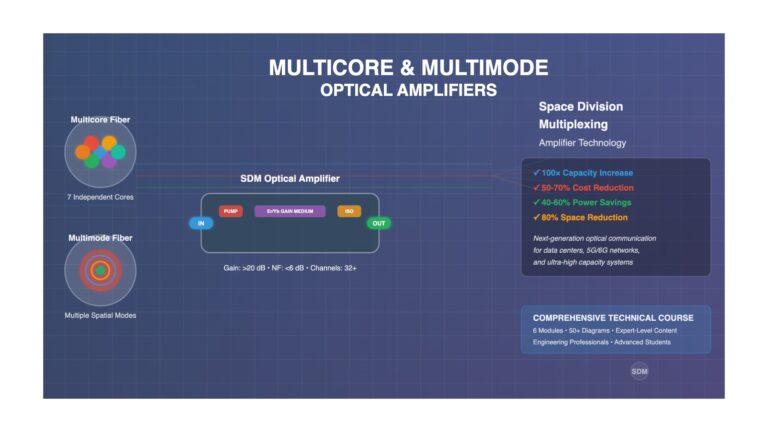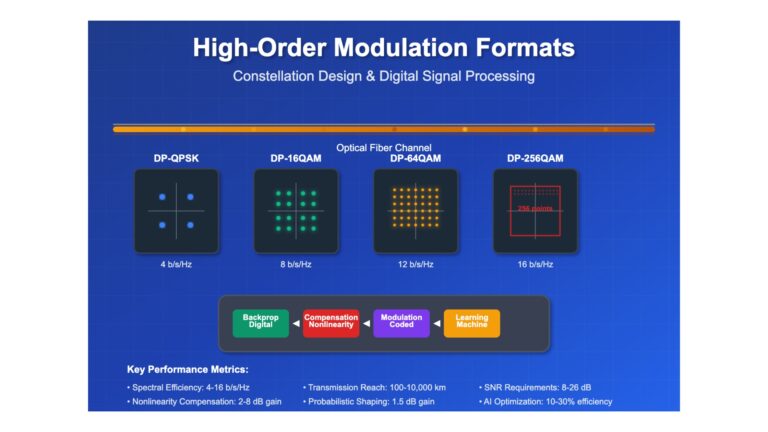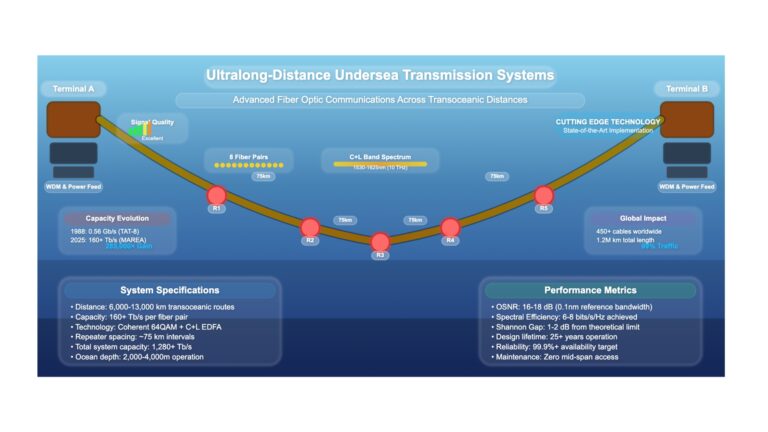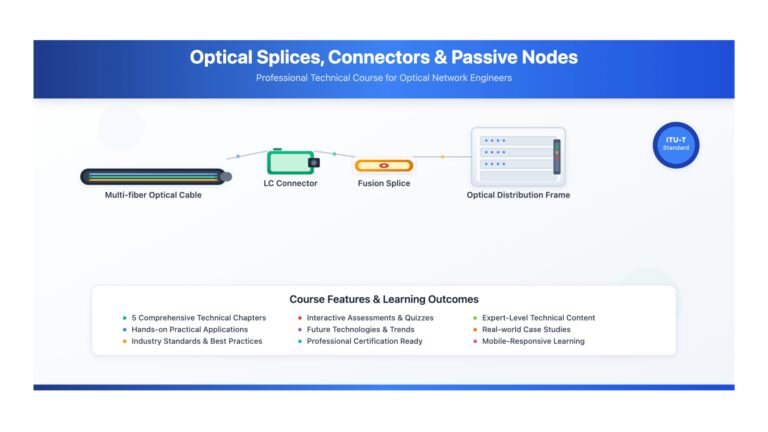Description
Curriculum
Instructor
Learning Objectives
- Understand the fundamental principles of direct-detection optical communication systems
- Compare direct-detection systems with coherent detection systems
- Identify key applications and advantages of direct-detection technology
- Analyze the basic architecture of intensity-modulation direct-detection (IM-DD) systems
- Evaluate the role of direct-detection systems in modern optical networks
Curriculum
- 6 Sections
- 51 Lessons
- 10 Weeks
Expanse all sectionsCollapse all sections
- Chapter 1 Introduction to Direct-Detection Systems9
- 1.11.1 What is Direct Detection?
- 1.21.2 Historical Context and Evolution
- 1.31.3 System Architecture and Components
- 1.41.4 Comparison with Coherent Systems
- 1.51.5 Key Applications and Market Drivers
- 1.61.6 Current Challenges and Opportunities
- 1.7Knowledge Check Questions
- 1.8Chapter Summary
- 1.9References and Further Reading
- Chapter 2 Conventional Direct-Detection Principles8
- Chapter 3 System Limitations and Challenges9
- Chapter 4 Advanced Self-Coherent Systems9
- 4.14.1 Introduction to Self-Coherent Detection
- 4.24.2 Field Detection Mathematics
- 4.34.3 Single-Sideband Signal Generation
- 4.44.4 Single-Signal Beating Interference (SSBI)
- 4.54.5 SSBI Mitigation Techniques
- 4.64.6 System Performance and Optimization
- 4.7Knowledge Check Questions
- 4.8Chapter Summary
- 4.9References and Further Reading
- Chapter 5 Kramers-Kronig Receivers8
- Chapter 6 Future Directions and Applications8
- 6.16.1 Stokes Vector Receivers and Polarization Multiplexing
- 6.26.2 Competitive Analysis: Direct Detection vs. Coherent Systems
- 6.36.3 Photonic Integration and System-on-Chip
- 6.46.4 Emerging Applications and Market Opportunities
- 6.56.5 Technology Roadmap and Research Directions
- 6.6Knowledge Check Questions
- 6.7Chapter Summary
- 6.8References and Further Reading
admin

3 Students8 Courses
Review
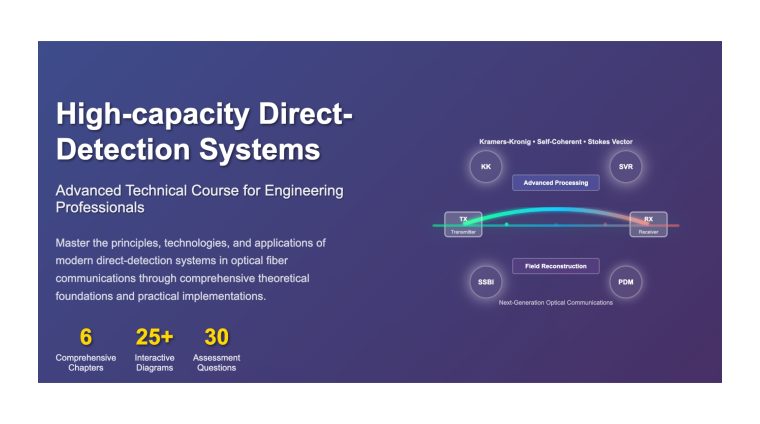
Free
1 student
51 lessons
Language: English
0 quiz
Assessments: Yes
Skill level All levels
Courses you might be interested in
Advanced Technologies
Learning Objectives Understand the capacity limitations of conventional single-mode fiber systems Analyze the benefits and challenges of space division multiplexing approaches Compare multicore fiber (MCF) and multimode fiber (MMF) implementations...
-
42 Lessons
Free
Advanced Technologies
Learning Objectives Understand the basic principles of optical fiber communication systems Analyze the fundamental limitations in optical transmission Explain the role of digital signal processing in modern optical systems...
-
53 Lessons
Free
Advanced Technologies
Learning Objectives After completing this chapter, you should be able to: Explain the historical development and significance of undersea transmission systems Identify the key components and architecture of modern undersea...
-
44 Lessons
Free
Fiber Optics & Components
Learning Objectives Understand the fundamental principles and importance of optical fiber splices in network infrastructure Analyze the different types of splice losses and their impact on system performance Compare and...
-
39 Lessons
Free


